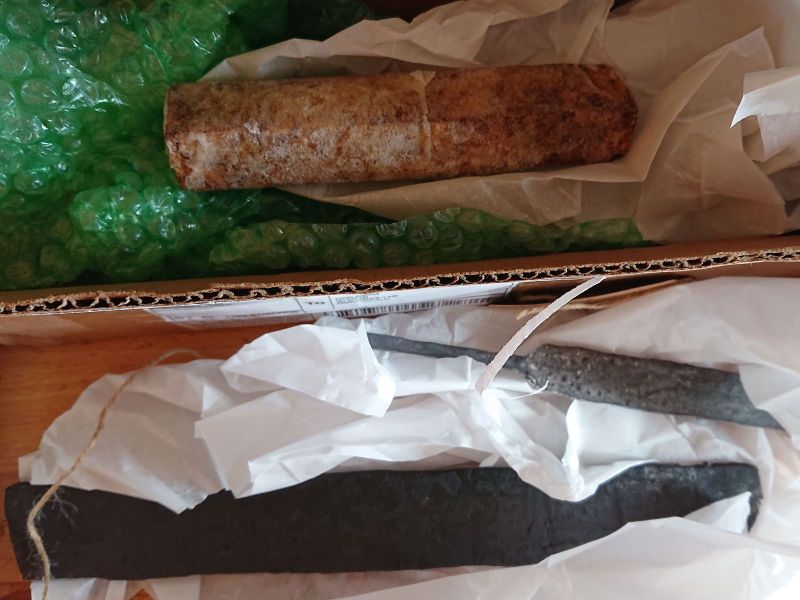I am finishing the kitchen-knives sets, and one of the tools that I was still missing in my toolbox was a branding stamp that could be used for wood and leather. For leather, I have used an impromptu one made from wood stabilized with epoxy, but that cannot be used to brand wood of course. But when making that I have figured out a process that could be also applied to making one out of steel, so after a lot of procrastinating the task, today I have finally bitten the bullet and took the two hours it needed.
The handle is from an extremely old and out-of-shape potato peeler. Maybe even antique, but I know of no museum that would take it of my hands so I have recycled it. The screw is recycled from old furniture. The stamp itself is from tool steel, although I will not be hardening it.
I could not tap the hole in the stamp very deep and well without re-grinding and thus destroying the taps, because standard taps need to go through. Thus I could not cut very good threads in there, just two turns of half-assed ones. But that should not be a problem, a few dents for the thread to latch on to should suffice, friction should take care of the rest. It is not supposed to come apart, and if it comes apart, I will braze it.
The one advantage of having a logo consisting of only straight lines is that it made the job relatively easy. A bit of filing, a bit of grinding with an angle-grinder, and here we go. Up close there are some flaws and the width to height ratio is a tiny bit off, but that is just life. I have tossed one attempt due to flaws, but I think this one will do.
Wood branding is not an exact science, there will always be some irregularities. But with some practice, I should get crisp and nice logos that can be placed even in visible areas. Which is my intention.
And there is absolutely no doubt that on leather, the results are way, way better than those I got with my wood-carved impromptu stamp.
I may give it a go one more time to get the proportions better, but in the meantime, I am going to use this one. I doubt anyone will complain about it.



















